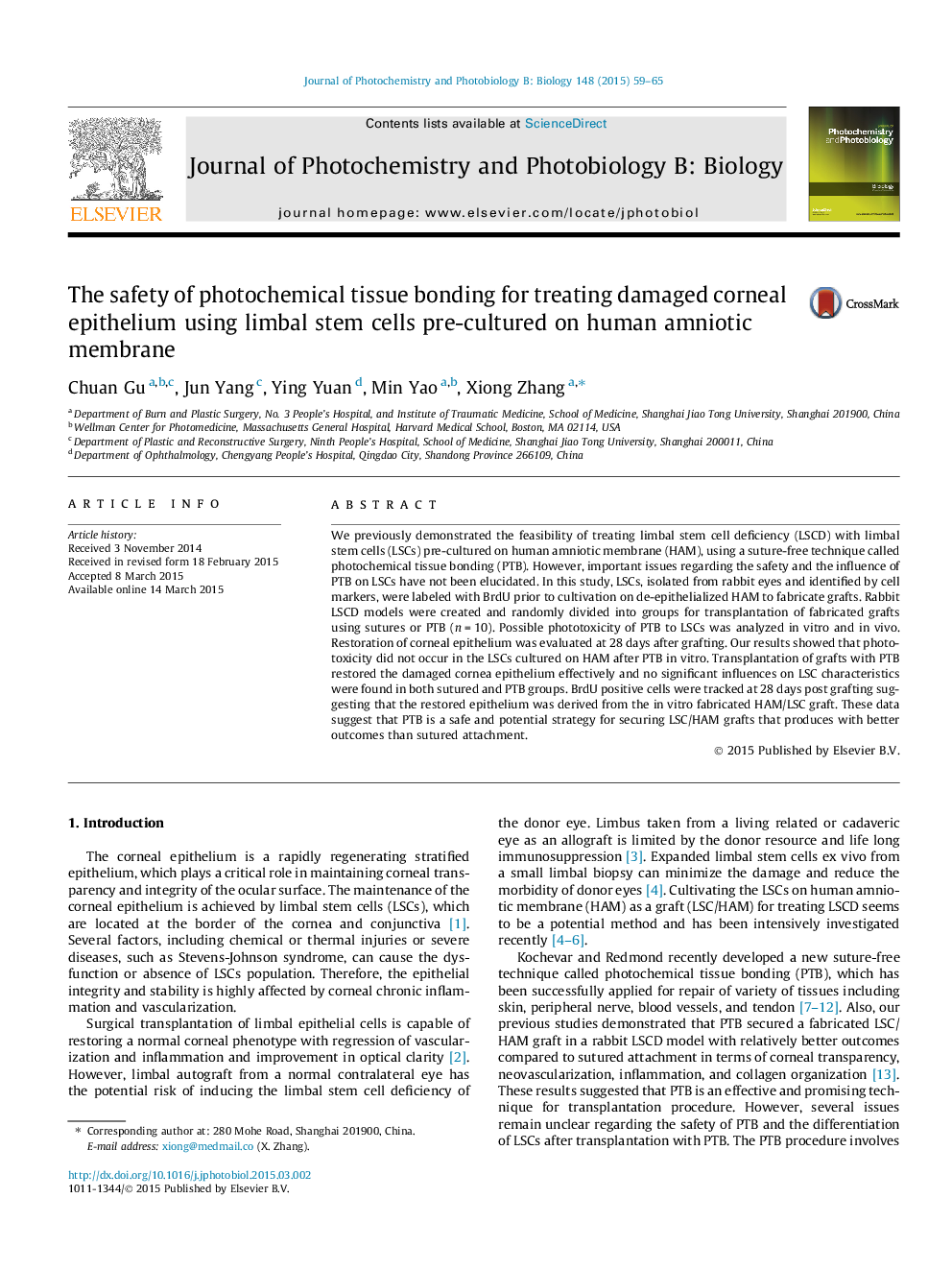| Article ID | Journal | Published Year | Pages | File Type |
|---|---|---|---|---|
| 29689 | Journal of Photochemistry and Photobiology B: Biology | 2015 | 7 Pages |
•Confirmed the efficacy of a novel light-activated, sutureless method for securing LSC/HAM graft to damaged cornea.•Light activated method is not toxic to LSCs in graft.•BrdU-labeled LSC are retained in restored epithelium.•LSC characteristics are partially retained in graft.
We previously demonstrated the feasibility of treating limbal stem cell deficiency (LSCD) with limbal stem cells (LSCs) pre-cultured on human amniotic membrane (HAM), using a suture-free technique called photochemical tissue bonding (PTB). However, important issues regarding the safety and the influence of PTB on LSCs have not been elucidated. In this study, LSCs, isolated from rabbit eyes and identified by cell markers, were labeled with BrdU prior to cultivation on de-epithelialized HAM to fabricate grafts. Rabbit LSCD models were created and randomly divided into groups for transplantation of fabricated grafts using sutures or PTB (n = 10). Possible phototoxicity of PTB to LSCs was analyzed in vitro and in vivo. Restoration of corneal epithelium was evaluated at 28 days after grafting. Our results showed that phototoxicity did not occur in the LSCs cultured on HAM after PTB in vitro. Transplantation of grafts with PTB restored the damaged cornea epithelium effectively and no significant influences on LSC characteristics were found in both sutured and PTB groups. BrdU positive cells were tracked at 28 days post grafting suggesting that the restored epithelium was derived from the in vitro fabricated HAM/LSC graft. These data suggest that PTB is a safe and potential strategy for securing LSC/HAM grafts that produces with better outcomes than sutured attachment.
